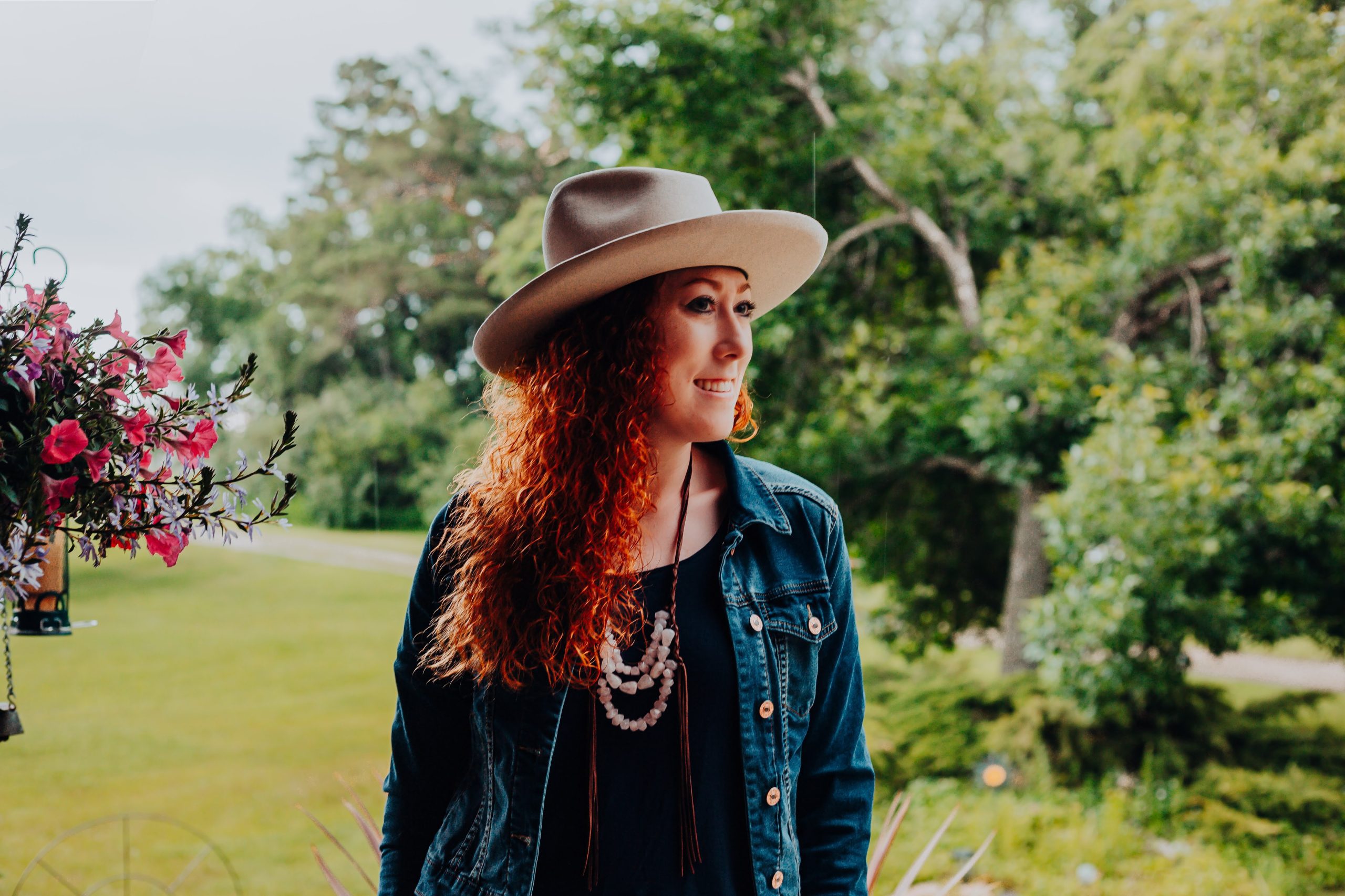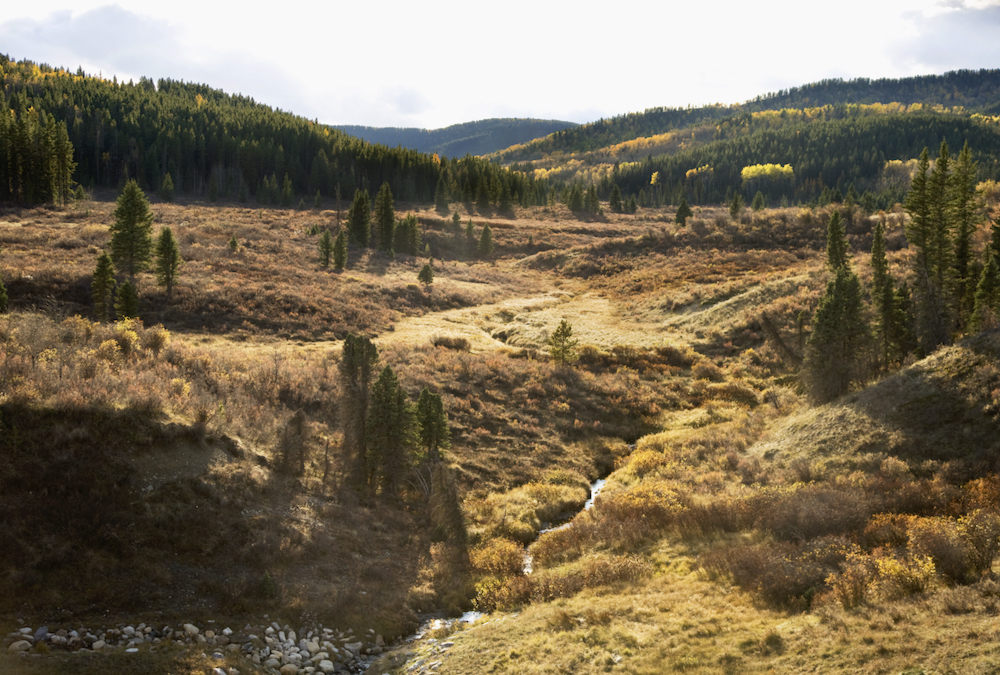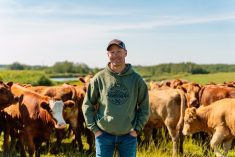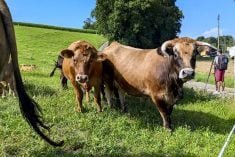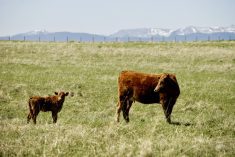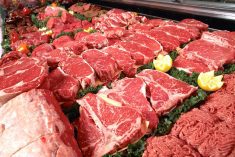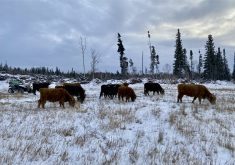David Kleiman’s first visit to a ranch in the southern Alberta foothills was an awe-inspiring experience he’ll never forget.
Nature and conservation have been life-long passions for Kleiman, a Calgary-based science teacher. After meeting Kimberly Wachtler of Burke Creek Ranch at a farmers market, Kleiman was eager to learn more about how cattle are raised at this 130-year-old cow-calf operation near Claresholm, Alta. When Wachtler invited Kleiman to visit her family’s ranch, he saw for himself how livestock can thrive in concert with nature.
Read Also
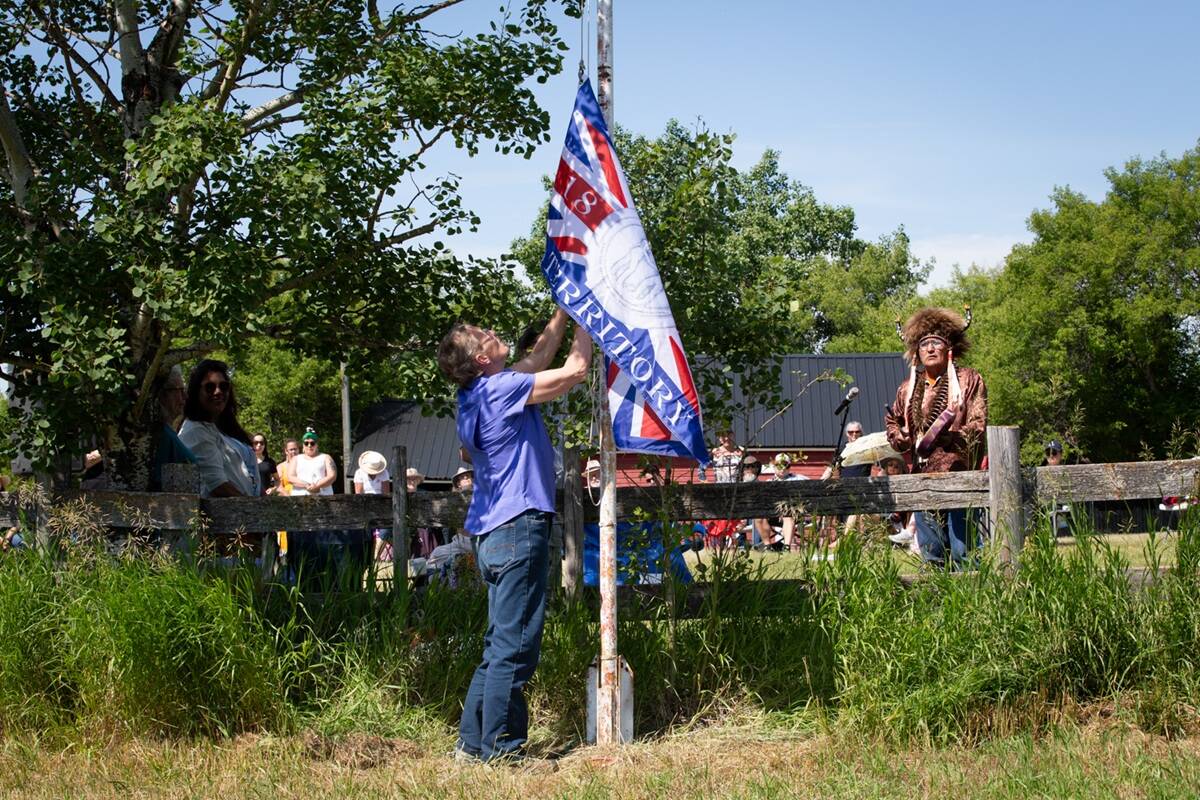
Treaty Land Sharing Network expands reach in Saskatchewan and Alberta
The Treaty Land Sharing Network, which connects land holders with First Nations and Metis people, has expanded since it began in 2018
“When I went up to Burke Creek Ranch, I’ll be honest with you, it brought tears to my eyes, (being) surrounded by a rich, biodiverse grassland ecosystem,” Kleiman recalls. “It’s just thriving life everywhere.”
Growing up in Toronto, Kleiman became concerned about human impacts on the environment, and his interest in biology, and more specifically ecology, led him to become a teacher. In teaching high school biology, he worked to foster an appreciation of nature in his students, as well as an awareness of how humans can affect it. Early in his teaching career, he found it troubling to see increasingly negative stories about the future for nature. But an awareness of the relationship between food and the environment prompted him to seek hopeful narratives related to food production.
“We vote every single day — multiple times a day — for where our food comes from, and those votes that we cast with our lifestyle and our purchasing decisions of food are actually one of our most direct and daily connections to nature,” he says.
In his quest to purchase food from places that resemble nature, Kleiman found sustainable sources of produce and aquaculture, but it took longer to find positive narratives that countered his worry about harming nature by eating meat.
“My sense is that meat-eaters increasingly believe that meat is a guilty pleasure, one that disproportionately harms nature, contributes to climate change and can result in the inhumane treatment of animals,” he says.
Kleiman found the sustainability narrative he’d hoped for when he learned about the symbiotic relationship between grazing animals and the Canadian grasslands, and in particular the grass-finishing system of beef production.
“You can’t have grasslands without herbivores, and that was a life-changing concept for me,” he says, noting that he now believes eating meat can be a type of conservation if it supports these types of beef operations.
“If people do not purchase meat from sustainable ranchers who are stewards of their piece of land, it is likely that their farms or practices will not be passed on to the next generation. It seems likely that their land could join the trend of conversion to monoculture, which can irreversibly damage these ecosystems.”
After visiting Burke Creek Ranch, Kleiman sought other opportunities to learn more about the sustainability of Canadian beef production and has since toured different operations and attended producer meetings.
“There’s third-fourth-fifth-generation cattle ranchers that have in some cases for more than 100 years been maintaining these beautiful … ecosystems that feed people,” he says. “I found it to be amongst some of the most inspiring stories of sustainable agriculture that I’d ever come across that I could teach my students about. And to this day, I have never seen any form of agriculture that looks more like nature than ranching.”
This is a narrative he feels strongly about, and he plans to use his voice as a teacher to advocate for sustainable ranching practices and to help change the public perception of Canadian beef production.
“I think there is a growing number of people like me who are trying to be conscious consumers. Unfortunately, what I see is that most conscious consumers who prioritize nature have negative views about eating meat.”
Encountering a brand-new narrative
As founder of the Three Percent Project, an initiative to educate students on climate solutions, Lee travelled across Canada, visiting 500 schools to speak about the need to take action. While visiting rural communities, he connected with the Canadian Cattlemen’s Association, which arranged for him to meet beef producers and visit around a dozen operations around the country.
“I think that it’s important for Canadians to understand that the Canadian beef industry is not one huge monolith industry that’s kind of out there to get me. They’re very much small, individual family enterprises that are trying to make ends meet,” says Lee. “I think that came as a shock to me.”
Connecting in person with Canadian beef producers made Lee aware of how misunderstood farmers and ranchers feel when they’re painted as environmentally destructive, when in truth they are committed to good stewardship of the land.
“That’s definitely a story that’s not told to the public, and I definitely didn’t hear much of that. I always thought, ‘Sure, that exists, but that’s a very small, extreme minority, case examples,’ but the Canadian story is that’s actually the norm.”
Learning about the role of ranching in conservation also surprised Juliette Autumn, a YouTube vlogger who debunks narratives around veganism on her channel. She was particularly impressed by the film Guardians of the Grasslands, which inspired her to film a video highlighting the facts shared in the documentary.
“I never thought of that aspect, that there are actually ecosystems that depend on ruminant animals,” says Autumn, who found this film to hit home because of its Canadian context.
“When they compared (the Northern Great Plains) to the Great Barrier Reef and being a protected area that’s potentially losing its biodiversity and needs to be looked after, I had no idea. I had no idea the Prairies were in danger at all — this is something I never heard before, and I never heard about using ruminants that we already have to protect it.”
Before starting her YouTube channel, Autumn was vegan for more than a decade in total, and coming back to meat products wasn’t easy for her. “It took a lot of convincing for a while because I was so scared of eating meat again, just because of all the stuff I had ‘learned’ over the years. But eventually, I saw the benefit of actually including more animal products in my diet,” she says.
“When I was pregnant with my last child, I got to a point where I was just so anemic that I had all the symptoms: out of breath, tired and I was craving meat all the time. And I was trying not to eat it because that was my mindset at the time.”
Autumn’s midwife encouraged her to start eating beef again to get the maximum nutritional impact, and it made a huge difference in her health during her pregnancy. The positive effect that eating meat had on her overall health prompted Autumn to learn about the nutrition of beef, as well as how cattle are raised.
“I think there is a growing movement also towards eating more beef,” she says, noting that consumers may be deterred by messaging that incorrectly promotes other products as healthier and more environmentally friendly than beef, such as the controversial update to the Canada Food Guide in 2019.
“They say that you can replace meat with tofu and stuff like that, but honestly, in my opinion, after years of not eating meat, you cannot replace meat. For me, I can’t replace it.”
Building trust with personal stories
While he’d like to say learning about beef production through a different medium would have had the same impact on him, he’s unsure because he hadn’t heard this narrative at all before his firsthand encounters with agriculture.
“I’m not sure what would have convinced me otherwise,” says Lee. “It’s just not feasible to try to invite 37 million Canadians all onto ranches and farms to see it for themselves … So you have to find in addition to that many different ways to tell the story effectively.”
All three agree that public trust is an issue, especially as people are inundated with contrasting messages about food production. Though Autumn was eager to seek out facts once she changed her mind about meat consumption, she feels that for many people, facts don’t land the way emotional messages do.
“You’ve got to get them by their heartstrings, too, and I think that’s where the vegan movement got people because a lot of the time the images you see are made to elicit those emotions,” she says, noting the influence of vegan documentaries such as Cowspiracy.
As well, Autumn advises producers to focus on the right audience. “You don’t want to waste your time on people that you can’t convince,” she says. “People who already have their mind set, it’s going to take a lot to change them. But going for people who are on the fence about it more or choosing chicken because that’s what they think is better, those are probably more so the people that you can convince.”
Understanding the consumer is crucial in making these connections, and Lee wants producers to know that people in urban areas are not their enemies. “City people are not out there to get you,” he says. “It’s just we have no idea. No one hears the story, no one tells the story, no one has these conversations.”
While Kleiman believes there isn’t one perfect narrative that will win people over, he feels crafting these narratives needs to be done so in an authentic, intelligent manner, using common values to avoid misunderstandings.
“I think it’s not just enough to say we care about nature. I think we have to be very clear with people when we talk about this — exactly what it is about cattle ranching that’s good for nature,” he says.
“I believe that farmers who strive to be sustainable need to use some common language and have good, clear answers to misinformation and misconceptions. They ought to be able to clearly express the stark contrast between monoculture and biodiversity,” he continues. “They need to know where the fossil fuel inputs are in their operations, and that includes what goes into making winter feed and feed for feedlots.”
Lee believes messaging directly from industry isn’t going to have the same impact as hearing an individual’s story. “Hearing that directly from the beef industry would not help because of course they’re going to say that. The public’s going to come at that with a minimum healthy skepticism to downright rejection,” he says.
Instead, he thinks hearing from producers themselves has more impact. “I think city people would appreciate and benefit from hearing stories of what’s happening in the farmers’ and ranchers’ lives, the people’s lives — not so much framed around the beef industry,” Lee continues.
“Individuals, families, parents, mothers and fathers — that’s something we always hold in common, and that’s the point of connection people will trust the most.”

